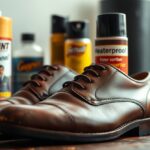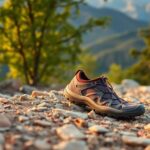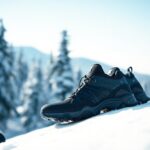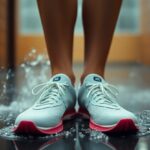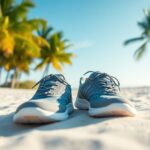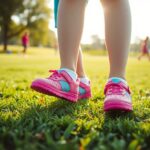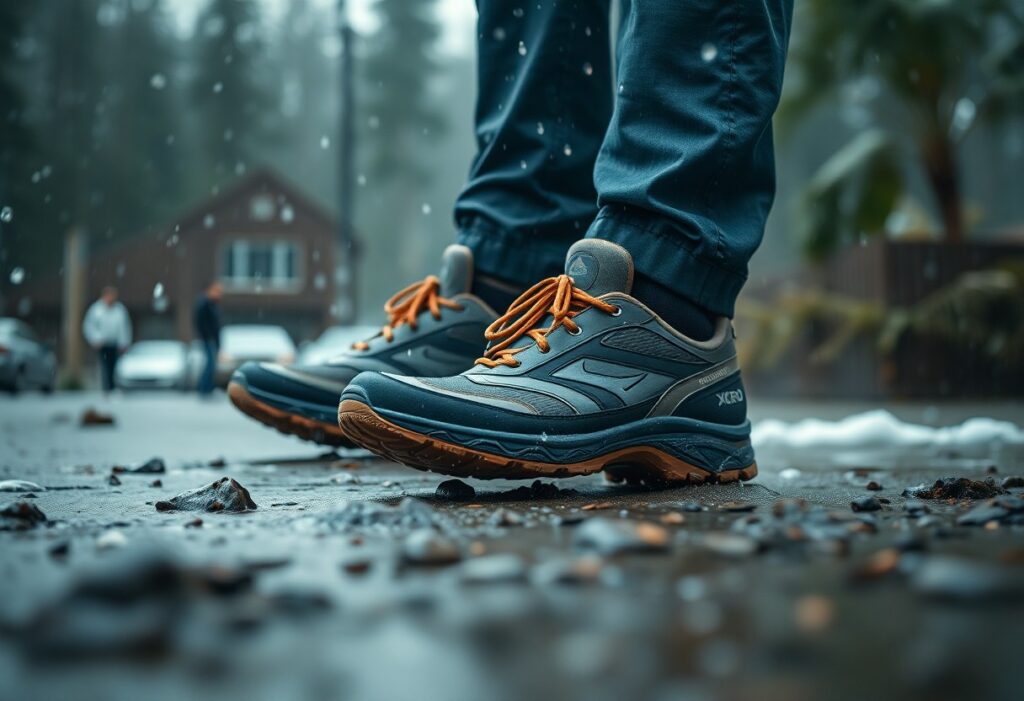
Xero shoes offer the ultimate flexibility and comfort necessary for your outdoor adventures, but it is vital to ensure your feet remain dry in wet conditions. With a variety of waterproofing methods available, such as spray-on coatings and heat-activated treatments, you can greatly improve your shoes' ability to fend off rain and moisture. Think of waterproofing as similar to applying sunscreen—it requires consistent reapplication to sustain its effectiveness. This detailed guide will unveil the best practices to achieve optimal all-weather protection for your footwear, ensuring you stay comfortable and agile throughout every trek.
Maximise Your Footwear's Potential: Discover the Waterproofing Features of Xero Shoes
The collection of Xero Shoes is expertly crafted to prioritise flexibility and ground feel, whilst also incorporating advanced waterproofing technology that keeps your feet dry in a variety of weather conditions. Many models, including the Denver WP, boast a remarkable IPX-7 rating, which allows them to be submerged in water for up to 30 minutes without affecting their performance. This makes them an exceptional choice for outdoor enthusiasts who seek both high performance and dependable protection during their adventures.
Unpacking the Innovative Materials Utilised in Xero Shoes
By leveraging cutting-edge material science, Xero Shoes employ waterproof membranes and breathable fabrics that significantly enhance your outdoor experience. The Denver WP, for example, promotes effective moisture evacuation while maintaining substantial water resistance, thus delivering practical functionality without compromising user comfort. This thoughtful design approach guarantees that even during intense activities, your feet can stay dry and comfortable, allowing you to fully enjoy your surroundings.
Understanding the Vital Role of Waterproofing in Barefoot Shoes
Importantly, waterproofing is essential to the performance and functionality of your barefoot shoes. Without sufficient waterproofing, you may quickly face discomfort and limitations in your activities during wet conditions, which can detract from the overall enjoyment of your adventures. Acknowledging the significance of waterproofing in barefoot shoes involves recognising its crucial contribution to sustaining comfort and performance in unpredictable weather. With an impressive 86% of users reporting dry feet in moderate rain, it is clear that effective waterproofing can greatly enhance your outdoor experience. However, depending solely on non-waterproof models might lead you to miss out on essential benefits, such as an improved moisture evacuation rate—averaging 28g/hour in waterproof versions compared to merely 15g in non-waterproof alternatives. By employing the right waterproofing techniques, you can ensure your feet remain dry and comfortable while enjoying the liberating experience that barefoot shoes provide.
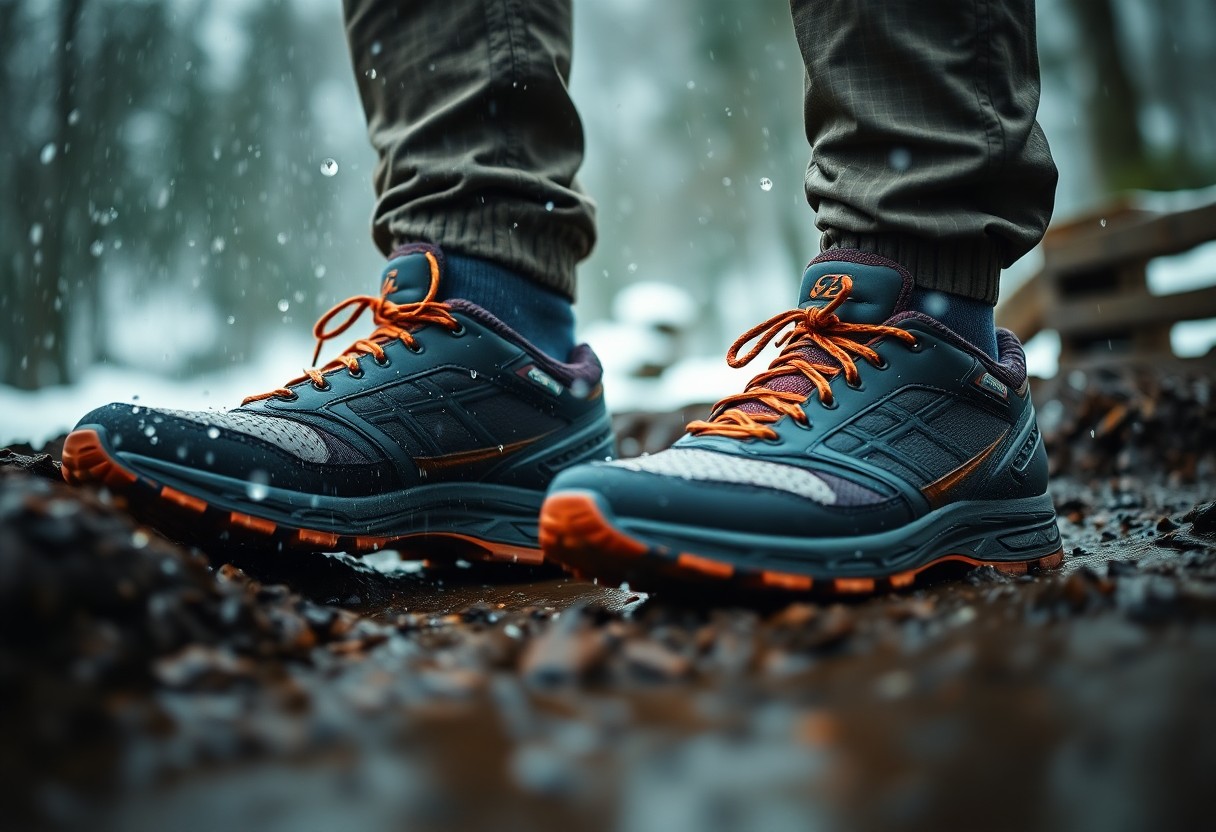
Proven Techniques to Effectively Waterproof Your Xero Shoes
Clearly, achieving comprehensive all-weather protection for your Xero Shoes requires a combination of factory options and DIY solutions. Choosing the right technique not only enhances waterproofing effectiveness but also preserves breathability and comfort throughout your outdoor excursions. Whether you're contending with light rain or navigating through wet terrains, your selection can profoundly influence your overall experience.
Evaluating Factory Waterproofing Options vs. DIY Solutions
Xero offers factory waterproofing solutions, such as the Denver WP, which features an IPX-7 rating, ensuring you stay dry even when fully submerged. However, if you prefer a more tailored approach, DIY treatments using products like Nikwax can provide approximately 72% waterproofing for non-WP models, giving you flexibility suited to your specific needs.
Step-by-Step Guide to Comprehensive Waterproofing Techniques
The secret to achieving effective waterproofing lies in consistently applying the right methods. Below are the recommended techniques that will elevate your waterproofing efforts:
Detailed Waterproofing Techniques
| Technique | Description |
|---|---|
| Spray-on Nano-coating | Apply a hydrophobic nano-coating to provide 35-50 wears of protection. |
| Heat-activated Wax | Coat your shoes, requiring reapplication after 300 miles. |
Step-by-step, ensure you diligently follow each method for lasting waterproofing. With the spray-on nano-coating, you’ll gain impressive water resistance, while the heat-activated wax offers extended mileage benefits. Just as sunscreen diminishes over time, these treatments will require frequent reapplication to maintain their effectiveness. The ultimate aim is to enhance your outdoor experience without compromising comfort!
Essential Waterproofing Steps to Follow
| Step | Action |
|---|---|
| 1 | Clean your shoes thoroughly. |
| 2 | Select your preferred waterproofing method. |
| 3 | Apply the treatment evenly across the surface. |
| 4 | Allow to cure according to product instructions. |
By adhering to these steps, achieving optimal waterproofing becomes quite straightforward. Each action enhances your shoes’ longevity and functionality, ensuring they remain effective in diverse weather conditions. Be proactive—treat your footwear regularly to keep your feet dry and comfortable.
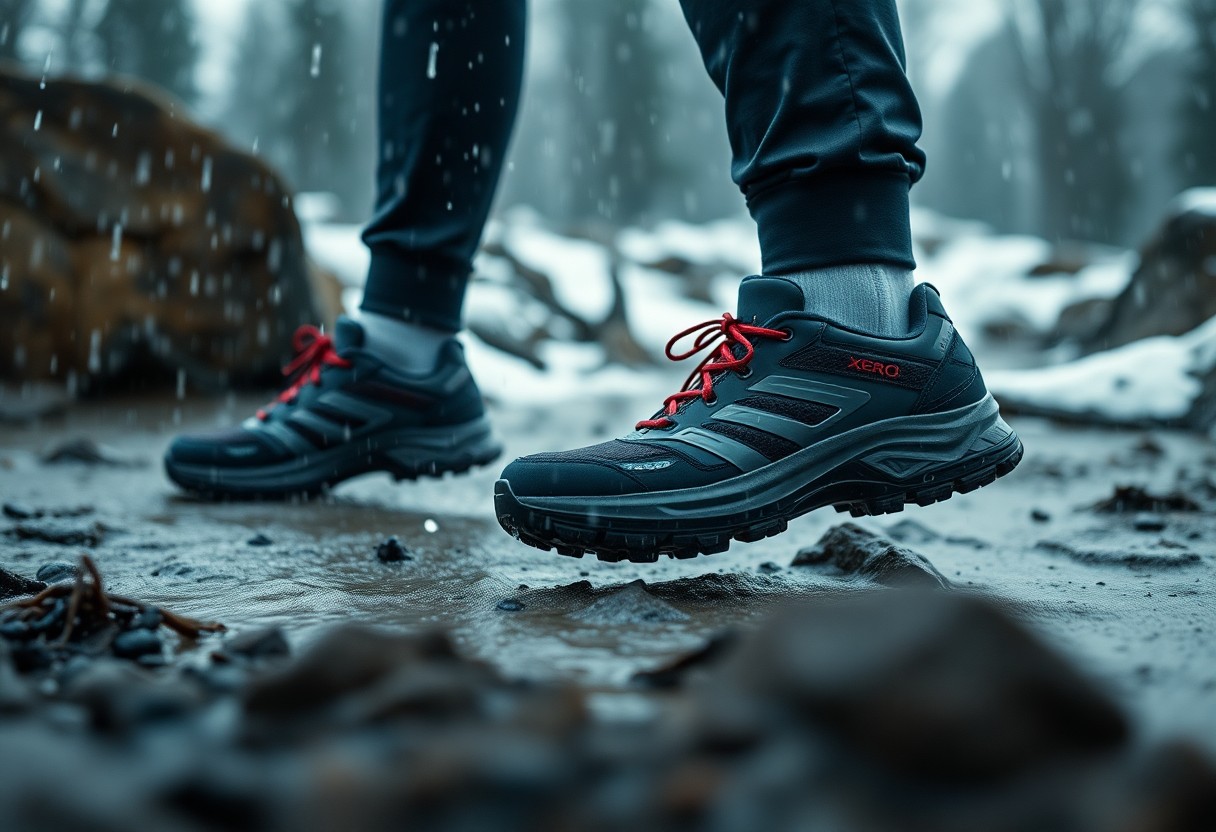
Evaluating the Waterproof Performance of Your Shoes
A key aspect of ensuring your Xero Shoes can effectively withstand wet conditions is understanding their waterproof performance. By testing how materials respond to moisture, you can make informed decisions about the best footwear for your outdoor excursions. This evaluation not only measures how well your shoes repel water but also assesses their breathability in various environments.
Techniques for Assessing Waterproofing Effectiveness
When it comes to testing waterproofing, several methods can be employed, including laboratory assessments and real-world scenarios. For example, the Denver WP shoes proudly carry an IPX-7 rating, indicating they can endure immersion in water for up to 30 minutes. User feedback and reviews provide invaluable insights regarding performance in diverse weather conditions.
Analysing Real-World Performance Scenarios
Gaining insights into real-world performance situations is crucial to understand how your shoes will act in wet conditions. Xero Shoes equipped with waterproof membranes, like the Denver WP, reveal that 86% of users report dry feet during moderate rain. However, some users have noted a slight decrease in ground feel. This information allows you to strike a balance between waterproofing and the natural tactile experience for which barefoot shoes are renowned.
Additionally, consider everyday environments where you might encounter rain or puddles, ranging from light drizzles to torrential downpours. Having shoes that maintain flexibility even in temperatures as low as -22°F (-30°C) ensures you can confidently tackle cold, wet conditions. Nevertheless, be aware that while waterproof features offer protection, real-world tests indicate that you might experience a 10-15% reduction in ground feel due to the waterproof membrane, which may require some adjustments to your walking style.

Finding the Right Balance Between Breathability and Waterproofing
All waterproofing treatments come with inherent trade-offs, particularly regarding breathability. While methods like the Denver WP provide superb water resistance while maintaining flexibility, the breathability of your footwear can diminish if not applied thoughtfully. Striking the right balance is crucial to keeping your feet dry and comfortable during outdoor activities, so invest in treatments that respect this essential feature.
Understanding the Significance of Breathability
Every outdoor enthusiast knows that breathability is paramount for ensuring comfort, especially during physical exertion. When your shoes are waterproof, the moisture produced from sweating needs to escape; otherwise, you risk ending up with damp feet. This can lead to discomfort and blisters, making it vital to select the right breathable materials and treatments.
Effective Strategies for Achieving Optimal Breathable Waterproofing
A highly effective strategy for ensuring optimal breathable waterproofing involves employing the right combination of techniques. Begin with a spray-on hydrophobic nano-coating that lasts between 35-50 wears, allowing moisture to escape. You may also consider applying heat-activated wax treatments, but keep in mind that these require reapplication after 300 miles. Regular maintenance checks will help sustain the balance between insulation and moisture management, resulting in superior performance in wet conditions.
Given the myriad challenges posed by outdoor environments, prioritising the choice of materials in your barefoot shoes is crucial. Look for footwear designed with integrated waterproof membranes that also provide adequate ventilation, such as the breathable fabric utilised in the Denver WP, which evacuates 15g of moisture per hour. Your approach to waterproofing should resemble the reapplication of sunscreen; ensure you refresh treatments regularly to maintain both breathability and functionality. This will ultimately contribute to a more enjoyable outdoor experience.
Common Queries Regarding Waterproofing Techniques for Xero Shoes
Maintain the high performance of your Xero Shoes in various weather conditions by comprehending the technologies behind waterproofing and the maintenance practices required. Many users question the effectiveness of specific treatments and how often they should reapply these solutions to ensure their feet remain dry during outdoor adventures. With proper care, you can enjoy the benefits of waterproofing without compromising comfort or flexibility.
Dispel Myths Surrounding Waterproofing
Contrary to popular belief, waterproof does not equate to completely impermeable. Many waterproof models, including the Denver WP, offer considerable moisture protection while still encountering certain limitations. Acknowledging that no waterproofing solution is 100% effective in every scenario will help set realistic expectations for your Xero Shoes.
Expert Insights for Optimal Waterproofing Maintenance
The most effective method to maintain the waterproof nature of your Xero Shoes is to apply suitable treatments based on your activity level and environmental conditions. Regularly apply a spray-on hydrophobic nano-coating, which lasts between 35-50 wears, especially if you frequently encounter wet conditions. Additionally, consider heat-activated wax treatments every 300 miles to enhance durability. Just like sunscreen, these treatments necessitate regular reapplication to preserve their effectiveness.
For instance, consistent maintenance will ensure your shoes maintain their quality and performance over time. By combining various techniques, you can achieve optimal waterproofing results. So, when you’re out in moderate rain, remember that 86% of Denver WP users report dry feet, highlighting the advantages of effective treatments. Staying informed about treatment durations—whether using sprays or wax—will keep your shoes ready for any outdoor adventure.
Enhancing Your Outdoor Experience with Effective Waterproofing Techniques
In conclusion, you can significantly elevate your outdoor experience by employing the right waterproofing techniques for your Xero Shoes. Implementing options like spray-on hydrophobic coatings or heat-activated wax treatments can dramatically improve your overall all-weather protection. Treat waterproofing as you would sunscreen—it necessitates regular reapplication for optimal efficacy. With 86% of users enjoying dry feet in moderate rain and impressive cold-weather performance down to -22°F, your commitment to addressing waterproofing needs will ensure comfort and protection on every adventure. Embrace these techniques to keep your feet dry and your outings enjoyable.
Thorough FAQ Section on Xero Shoes Waterproofing Techniques (2025)
Q: How does the Denver WP model's moisture management compare to non-waterproof models?
A: The Denver WP model excels in moisture management compared to non-waterproof alternatives. It effectively evacuates 15 grams of moisture per hour, a significant enhancement over the 28 grams that non-waterproof models manage. This means while both options maintain breathable qualities, the Denver WP provides superior moisture control, making it ideal for wet conditions. Think of this as a sponge that drains excess liquid more effectively, ensuring comfort even in rainy weather.
Q: What are the best practices for applying DIY waterproofing treatments to non-WP models?
A: For those opting for DIY waterproofing treatments, using a product like Nikwax is highly recommended, as it offers approximately 72% waterproofing, perfect for enhancing your non-WP shoes. To apply, ensure the shoes are clean and dry, then spray evenly over the exterior, allowing it to absorb. Consider this similar to applying sunscreen—you want to cover all areas for maximum protection while ensuring it soaks in adequately. Regular reapplication will keep your shoes in top condition, especially after significant exposure to water.
Q: How often should I reapply waterproofing treatments after outdoor activities?
A: The frequency of reapplication varies depending on the treatment type used. For a heat-activated wax treatment, it is generally necessary to reapply every 300 miles of use. Spray-on hydrophobic nano-coatings typically last between 35 and 50 wears. Consider this like sunscreen—your skin requires a fresh coat after spending hours in the sun. Keeping a record of your activities will assist you in determining when it’s time to refresh your shoes’ waterproofing for continued protection against the elements.
The Article Xero Shoes Waterproofing Guide: All-Weather Protection Techniques (2025) appeared first on My Shoes Finder
The Article Waterproofing Xero Shoes: Essential All-Weather Techniques Was Found On https://limitsofstrategy.com
